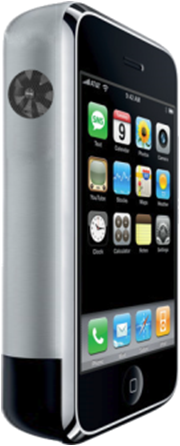A more powerful phone
The subject of power in embedded systems just does not seem to go away – like my postings here and here. And I do not see the situation changing any time soon. If it is not design consideration for your current project, I promise that it will be on your agenda before long.
As smart phones become increasingly ubiquitous, it seems worthwhile considering how concerns about power have influenced their design …
 At a recent conference [ESC in San Jose, CA], one of my colleagues gave a presentation which covered a number of the key issues in low power design. Do email me if you want a copy of his slides. He used the mobile phone handset as an example – specifically he considered what an iPhone might be like if no low power design techniques had been applied. There would be 2 obvious changes: first, the phone would be a whole lot bigger and heavier, if only to accommodate a much larger battery; second, it would get very warm and might even need a cooling fan! I borrowed this mock up picture from the presentation [thanks Adam]. Imagine having this monster in your pocket.
At a recent conference [ESC in San Jose, CA], one of my colleagues gave a presentation which covered a number of the key issues in low power design. Do email me if you want a copy of his slides. He used the mobile phone handset as an example – specifically he considered what an iPhone might be like if no low power design techniques had been applied. There would be 2 obvious changes: first, the phone would be a whole lot bigger and heavier, if only to accommodate a much larger battery; second, it would get very warm and might even need a cooling fan! I borrowed this mock up picture from the presentation [thanks Adam]. Imagine having this monster in your pocket.
This is all very fanciful, but much closer to the real world than you might think. Here is a real conversation [only paraphrased a bit]:
“Hey guys – I got a new phone.”
“What’s it like?”
“It’s just like an iPhone, but much cheaper and even better.”
“Better?”
“Yes. It can take two SIM cards, so I can use the phone for both business and personal calls. No more carrying two phones.”
“Cool. Where did you get it?”
“On eBay. It came from China.”
“Sounds good. Any downsides?”
“Well … it is a bit power hungry.”
“How bad? What’s the battery life?”
“About three hours.”
“$%&&@!!!”
“But it’s OK. They supply two additional batteries. It’s really great.”
I think this happy customer gets my “Geek of the Week” award.
